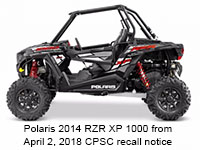Consumer class actions predicated on state laws alleging deceptive claims are one of the scourges of modern marketing. In a recent decision, the Second Circuit laid out some important guidance on whether and how putative class actions based on laws of different states can move forward.
In Langan v. Johnson & Johnson Consumer Companies, Inc., Langan, a Connecticut resident, sued J&J for violating the Connecticut Unfair Trade Practices Act (CUTPA), alleging that two Aveeno Baby washes were deceptively marketed as containing “natural oat formula” when they allegedly only contained 1% natural ingredients. Langan sought class certification on behalf of Connecticut consumers and consumers in 17 other states who purchased the two baby washes under those states’ “mini-FTC Acts”.
A Connecticut federal district judge certified a class of consumers who had purchased the products in 18 states—rejecting J&J’s arguments that the Plaintiff lacked Article III standing to bring a class action under multiple state laws and that the state consumer protection laws were too varied to satisfy the predominance requirement of Rule 23.Continue Reading Second Circuit Says Multi-State Consumer Class Actions Might Not Be All-Natural
 Robust conversations about IoT, smart technology, and product safety continue across the federal government. On May 16, 2018, the
Robust conversations about IoT, smart technology, and product safety continue across the federal government. On May 16, 2018, the  On May 16, 2018, the Consumer Product Safety Commission held a public hearing to receive testimony on the Internet of Things (IoT) and issues related to product safety (IoT Hearing). Thirteen diverse stakeholders presented at the IoT Hearing. Of the thirteen presenters, there were three representatives of consumer organizations, one academic, one security expert and researcher, one representative from a testing lab coalition, one representative from a testing and voluntary consensus standards organization, two representatives from international interests, and three representatives from industry trade associations or coalitions. While each presenter had his/her own agenda, there was some agreement: There are potential significant safety, privacy, and product liability issues associated with emerging IoT technologies. At the hearing, the CPSC learned there are currently 8.4 BILLION connected things, and 5 BILLION consumer applications—numbers allegedly on track to double by the year 2020.
On May 16, 2018, the Consumer Product Safety Commission held a public hearing to receive testimony on the Internet of Things (IoT) and issues related to product safety (IoT Hearing). Thirteen diverse stakeholders presented at the IoT Hearing. Of the thirteen presenters, there were three representatives of consumer organizations, one academic, one security expert and researcher, one representative from a testing lab coalition, one representative from a testing and voluntary consensus standards organization, two representatives from international interests, and three representatives from industry trade associations or coalitions. While each presenter had his/her own agenda, there was some agreement: There are potential significant safety, privacy, and product liability issues associated with emerging IoT technologies. At the hearing, the CPSC learned there are currently 8.4 BILLION connected things, and 5 BILLION consumer applications—numbers allegedly on track to double by the year 2020.
 Last week the International Consumer Product Health and Safety Organization (ICPHSO) and ASTM International held a workshop to discuss the recently-updated age determination guidelines from the
Last week the International Consumer Product Health and Safety Organization (ICPHSO) and ASTM International held a workshop to discuss the recently-updated age determination guidelines from the  Over the past few years, class action plaintiffs have filed a slew of lawsuits against online retailers under the New Jersey Truth in Consumer Contract, Warranty and Notice Act (TCCWNA), which prohibits a seller from offering or entering into consumer contracts that contain any term that violates a “clearly established” New Jersey or federal law. Violations are punishable by a maximum civil penalty of $100, actual damages, or both, and private actions can be brought by “aggrieved consumers” (more on that later).
Over the past few years, class action plaintiffs have filed a slew of lawsuits against online retailers under the New Jersey Truth in Consumer Contract, Warranty and Notice Act (TCCWNA), which prohibits a seller from offering or entering into consumer contracts that contain any term that violates a “clearly established” New Jersey or federal law. Violations are punishable by a maximum civil penalty of $100, actual damages, or both, and private actions can be brought by “aggrieved consumers” (more on that later).